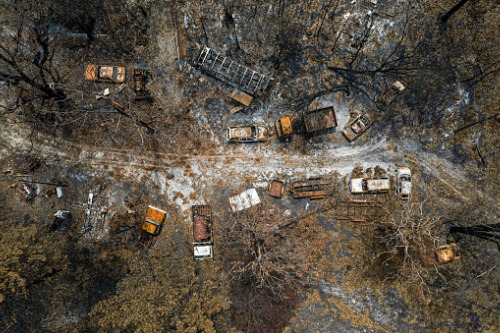

The Insurance Bureau of Canada (IBC) has warned that the projected $78 million in insured property damage resulting from the wildfire that damaged the community of Lytton, BC is just the tip of the climate change impact iceberg – and that insurers will have to update their risk modelling appropriately.
The bureau has additionally reported that nine out of the 10 most expensive years for insured property damage in Canada have occurred since 2005. The outlier is 1998 – the third most expensive year on record – due to claims from a Quebec ice storm.
Craig Stewart, IBC vice president of federal affairs, noted that the average cost of claims for property damage or losses due to severe weather has increased more than fourfold over the last decade to roughly $2 billion. That is up from about $400 million annually between 2000 and 2009 – around the time when insurers began to see increases in property claims.
Meanwhile, uninsured catastrophe losses over the past decade are somewhere around double the amount of insured losses, a federal government report released last week said.
In an interview with The Canadian Press, Stewart cautioned that the climate crisis is fuelling "more frequent, but also more severe weather events," citing the flooding in Eastern Canada in recent years, as well as the higher-intensity tornadoes and wildfires that come up almost every season.
"Those events may have happened anyway," the vice president said. "But they wouldn't have been as intense as what we're witnessing now."
To give some perspective, Stewart recalled the 20-minute hailstorm that struck Calgary last June, which resulted in insurance payouts of over $1 billion for about 100,000 claims. He also pointed to the 2016 Fort McMurray wildfire, which led to nearly $4 billion in insured losses – the costliest natural disaster on record for Canadian property insurers. In both disaster cases, insurers relying on outdated risk modelling suffered significant losses, he said.
"Data that's driving underwriting decisions is now being updated to reflect that new risk," Stewart commented, prefacing that reinsurers have taken note of Canada’s heightened risk as of late.
"Reinsurers have lost billions of dollars in this country over the last decade. So they are upping their rates, insurers are paying more. And of course, that gets passed down in terms of increased premiums to customers."
Stewart also said in the interview that he will be co-chairing a new federal advisory table on disaster resilience and security, with the aim of setting clear disaster resilience targets based on data and risk assessments that reflect current and future climate conditions.
